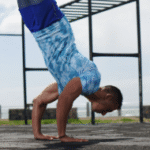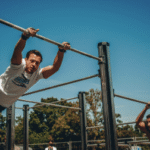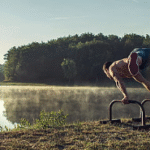Preparing for Calisthenics Competitions via Private Training
While I’m currently located in Brazil, I can certainly provide a detailed description of how private calisthenics training in Houston, USA, would be structured to prepare athletes for competition. The principles of competition preparation in calisthenics are universal, even if the specific training location differs.
Preparing for Calisthenics Competitions via Private Training in Houston, USA
For Houston athletes with aspirations of competing in the dynamic and demanding world of calisthenics, private one-on-one training offers the most focused, efficient, and strategic pathway to success. Unlike general training or group classes, private coaching allows for a hyper-individualized approach tailored to the specific rules, judging criteria, and demands of calisthenics competitions, maximizing the athlete’s potential for peak performance on the platform.
Here’s a detailed exploration of how private calisthenics training in Houston would be structured to prepare athletes for competition:
- In-Depth Competition Analysis and Goal Setting:
Rulebook Mastery: The coach will thoroughly analyze the specific rules and judging criteria of the target competition (e.g., National Fitness Games, local Houston events). This includes understanding point systems, required elements, time limits, and prohibited movements.
Strengths and Weaknesses Assessment (Competition-Specific): Evaluating the athlete’s current skill set and identifying their strengths and weaknesses in relation to the competition’s requirements. This helps prioritize training focus.
Strategic Routine Development: Collaboratively designing a competition routine that showcases the athlete’s strengths, strategically incorporates required elements, maximizes point potential, and flows smoothly and aesthetically.
Realistic Goal Setting: Establishing achievable yet challenging goals for the competition, considering the athlete’s current level and the timeframe.
- Highly Individualized and Periodized Training Programs:
Competition-Focused Programming: Designing training cycles that specifically peak the athlete’s strength, power, skill execution, and endurance leading up to the competition date. This involves meticulous periodization with phases for hypertrophy, strength, power, skill acquisition, and tapering.
Routine-Specific Training: Dedicated training time focused on practicing the competition routine under simulated conditions, including time limits and transitions between elements.
Addressing Weaknesses for the Routine: Identifying specific movements or transitions within the routine where the athlete struggles and implementing targeted exercises to improve those areas.
Strength and Power Development for Dynamic Elements: If the routine includes dynamic skills (e.g., muscle-ups, kips, throws), the program will incorporate exercises to enhance explosive power and speed.
Static Hold Specialization: For routines featuring static holds (e.g., planche, levers, handstands), the program will include focused training on building and maintaining these holds with impeccable form and duration.
Endurance Training for Longer Routines: If the competition involves longer performances or multiple rounds, the program will incorporate elements to improve muscular endurance and stamina.
- Meticulous Form Refinement and Judging Criteria:
Strict Form Emphasis: Perfecting the athlete’s form on all competition elements according to the judging standards. This involves detailed video analysis and precise feedback.
Aesthetic Optimization: Refining the fluidity, control, and overall aesthetic of the routine to impress the judges.
Point Maximization Strategies: Identifying opportunities within the rules to maximize the athlete’s score through strategic element selection and execution.
- Simulated Competition Training:
Mock Competitions: Regularly simulating the competition environment, including performing the routine in full, adhering to time limits, and practicing transitions between elements.
Judging Simulation: Incorporating feedback based on simulated judging to identify areas for improvement in both execution and presentation.
Pressure Acclimation: Implementing strategies to help the athlete perform optimally under the pressure of competition.
- Mental Preparation and Performance Psychology:
Goal Visualization: Guiding the athlete in visualizing successful performance of their routine.
Stress Management Techniques: Teaching techniques to manage anxiety and perform calmly under pressure.
Focus and Concentration Training: Enhancing the athlete’s ability to maintain focus during the competition.
Building Confidence and Resilience: Fostering a strong belief in the athlete’s abilities and the resilience to overcome any setbacks.
- Strategic Peaking and Tapering:
Reducing Volume and Increasing Intensity: Implementing a strategic taper period leading up to the competition to reduce fatigue and allow the athlete to perform at their peak.
Optimizing Rest and Recovery: Emphasizing the importance of sleep, nutrition, and active recovery during the final stages of preparation.
- Injury Prevention and Management:
Competition-Specific Warm-up and Cool-down Protocols: Designing routines tailored to the demands of the competition.
Addressing Any Lingering Injuries: Implementing strategies to manage any existing injuries and prevent them from hindering performance.
In conclusion for Houston’s aspiring calisthenics competitors, private training provides the indispensable individualized attention, strategic programming, meticulous form refinement, simulated competition experience, and mental preparation necessary to achieve peak performance on the platform. A dedicated coach acts as a strategic partner, guiding the athlete through every stage of preparation to maximize their potential for success in the competitive arena.

Preparing for Calisthenics Competitions via Private Training
Route
Calisthenics Gym Houston Functional Bodyweight Training
Secondary phone: (346) 483-3195
Email: info@calisthenicsclubhouston.com
URL: https://calisthenicsclubhouston.com/
Monday 6:00 AM - 7:00 PM Tuesday 6:00 AM - 7:00 PM Wednesday 6:00 AM - 7:00 PM Thursday 6:00 AM - 7:00 PM Friday 12:00 PM - 6:30 PM Saturday 9:45 AM - 12:00 PM Sunday 3:00 PM - 5:00 PM





